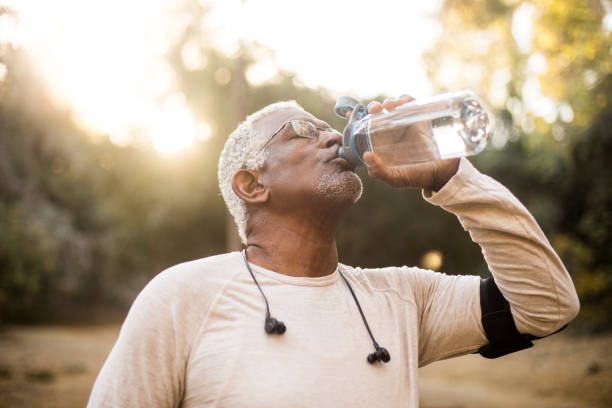Electrolytes aren’t the reason your body can go, but they do allow it to run smoothly. Similar to the battery in automobiles, the minerals found in your blood and other bodily fluids stimulate voltages that carry electrical impulses – in the nature of nerve stimulation and muscle contractions, across your cells.
This electrical energy keeps your organs working properly. In reality, electrolytes aid in ensuring optimal performance for your nervous, digestive, muscles, and cardiac systems. This article will focus on basic aspects such as how your body regulates electrolytes, what are signs that you have an electrolyte imbalance and the most important aspect of how to replenish your electrolytes.
How does the body regulate electrolytes?
Your kidneys are the hub for electrolyte monitors. They are able to detect changes in your body through shifts in electrolyte levels.
Exercise that is intense is the most popular way to shed electrolytes. The hotter the temperature plus the greater intensity of the workout the more water is lost.
According to the American College of Sports Medicine, The average person loses up to 6 percent or 2 percent of their body weight in exercise sessions as sweat is released.
Another cause of electrolyte loss occurs in cases of chronic vomiting or diarrhea. This fluid needs to be replaced to prevent dehydration and to ensure that vital body functions are operating properly.
Also, if an extreme exercise enthusiast you should follow a rigorous workout program, or if you have a medical problem that needs to be monitored closely for liquid intake and exercise. Andrea Jones M.D. a neurologist, suggests speaking with your physician to know your limits and water requirements.
“Staying hydrated is key to proper body function, so make sure you always have your reliable clear bottle full of fresh water with you,” says Dr. Jones.
The signs of an imbalance in electrolytes
If the level of electrolytes in your body is excessive or too low, it is possible to develop
- Dizziness
- Cramps
- Irregular heartbeat
- Mental confusion
- The most commonly reported indication of low electrolytes is muscle cramping. It can be debilitating and painful.
Maintaining electrolyte levels
The best way to keep electrolytes in balance is by paying attention to your thirst. The doctor Dr. Jones recommends drinking about two cups of fluid two hours prior to exercising. After that, you should drink 4 to 6 ounces every between 15 and 20 minutes during your physical activity. Finally, have a drink after you have finished exercising.
How can electrolytes be replenished?
Hydration is crucial to maintaining the balance of electrolytes. Water is the most natural option for drinking water. It’s not as expensive and more readily available than other drinks. Coconut water can be a good alternative to replenish electrolytes. Coconut water isn’t high on the glycemic indices, therefore it will not significantly alter the sugar level in your blood. There is also evidence that it can help lower blood pressure and cholesterol -an excellent reason for heart health to drink.

But sports drinks are more appealing. They are a source of electrolytes as well as carbohydrates that replenish the body’s energy. A lot of sports drinks contain either potassium or sodium chloride included which are electrolytes majorly that are lost during exercise. The sugar and flavor of these drinks can entice users to drink a greater quantity than water.
Drinks to avoid
Carbonated soft drinks, fruit juices, and energy drinks ought to be avoided as hydration sources. They’re full of sugar and calories that are not needed. The carbs contained in these drinks offer only short bursts of energy instead of long-term benefits. “Staying well-hydrated benefits our bodies in so many intricate ways,” says Dr. Jones. “Our bodies are extremely complex, and water is a vital part of life, and we can’t do without. This is the reason why no one can live more than three to five days without the intake of water.”

